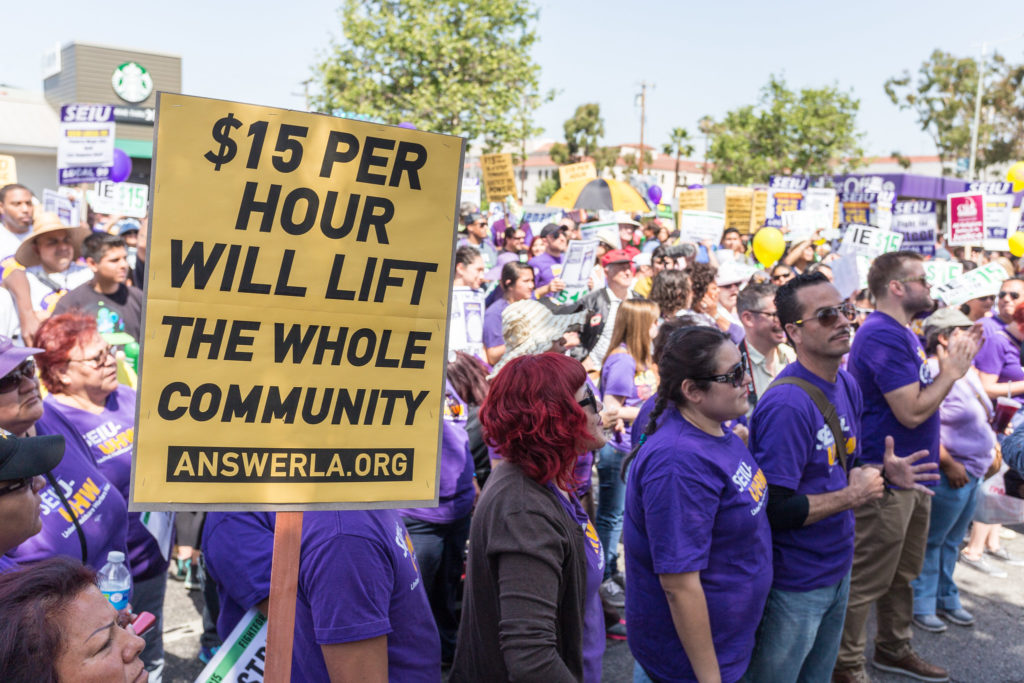Earlier this year, legislation to increase the minimum wage to $15 by 2024 was re-introduced in Congress. Flanked by Speaker Nancy Pelosi and other co-sponsors, Rep. Bobby Scott introduced the 2019 Raise the Wage Act, stressing the need to “stimulate the economy on Main Street.”
The pushback was swift, familiar and rooted in a fundamental misunderstanding of how the labor market actually works.

Commentators across the political spectrum have argued that minimum wage increases cause job losses or cuts in work hours. As a labor economist who studies wages, I know that this isn’t true—but it’s also the wrong thing to focus on.
In 1933, just five years before the U.S. established a federal minimum wage, British economist Joan Robinson coined the term monopsony to explain the circumstance in which multiple structural barriers within the labor market reduce wages below competitive levels and offer little to no job opportunities. “It is possible to remove exploitation,” she wrote, “which is due to imperfection of the labor market, by imposing a minimum wage instead of making the market for labor perfect.”
Monopsony is usually narrowly illustrated as a concentrated labor market where workers are limited to one or two employers in their area, forcing them to accept whatever positions are available—think small, geographically isolated towns where most residents are employed by a mining company. And mounting evidence shows that it does lead to stagnant wages. But now, we’re watching this practice take on multiple variations.
When companies in many different sectors, including retail giants like Walmart and fast-food chains, dominate local labor markets and are able to gain such an upper-hand, there no longer is a need for them to compete for workers by bidding up wages. The lives of low-wage workers are exceptionally precarious, and leave them little room to search for better employment options—and that’s if they even actually exist or are accessible in their region.
It’s not just the dominance of employers in high concentration areas posing a threat to the livelihood of workers: simple discrimination, work-life constraints and structural barriers all limit how easily we can search for and get a job with fair pay suited to our skills and interests.
These obstacles place a particularly high level of burden on communities of color. Black Americans continue to experience high levels of unemployment, which are partly due to hiring discrimination, and employers hiring from these stratified labor markets are more likely to offer a lower wage.
We know that when people of color and women do well, so does our economy. That’s why policy levers like an increased minimum wage can be used to boost workers’ pay without killing jobs when those increases are correcting for such imperfections.
With income inequality at near-record highs, the economy is best summed up as a three-legged table, balancing on an ever-narrower base—and we’re bound to topple over eventually. An increase in the minimum wage will advance the economy on two fronts, improving worker outcomes and correcting imperfections in the labor market.
Economic theory predicts that workers should be paid equal to the value they contribute to production, but when employers are able to take advantage of these discriminatory and structural features in our labor market, they will undercut these workers by paying them less than they are worth. “The market” won’t work on its own when employers are able to underpay someone because of their gender, race or where they live.
Workers are the economy. They create and produce the goods and services we all rely on. And an economy that fails to pay workers a basic living wage is not a functioning one. When all workers, regardless of their race and gender, get paid a decent wage, they are capturing the gains of economic growth that they are creating.
That is the America we all deserve.





